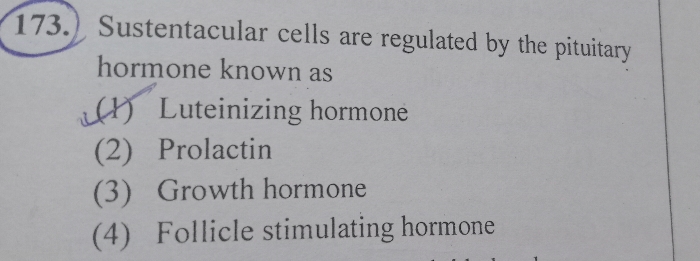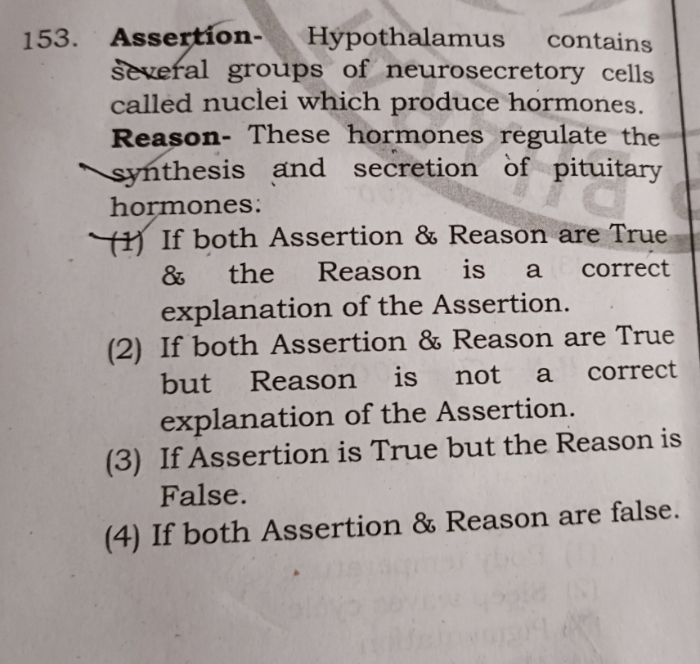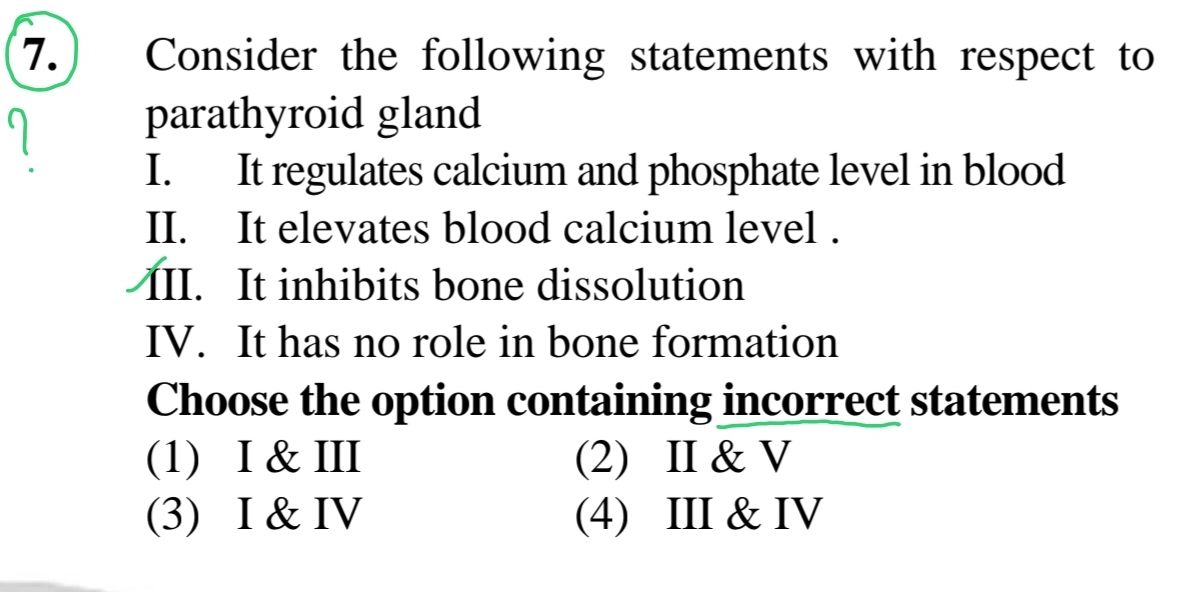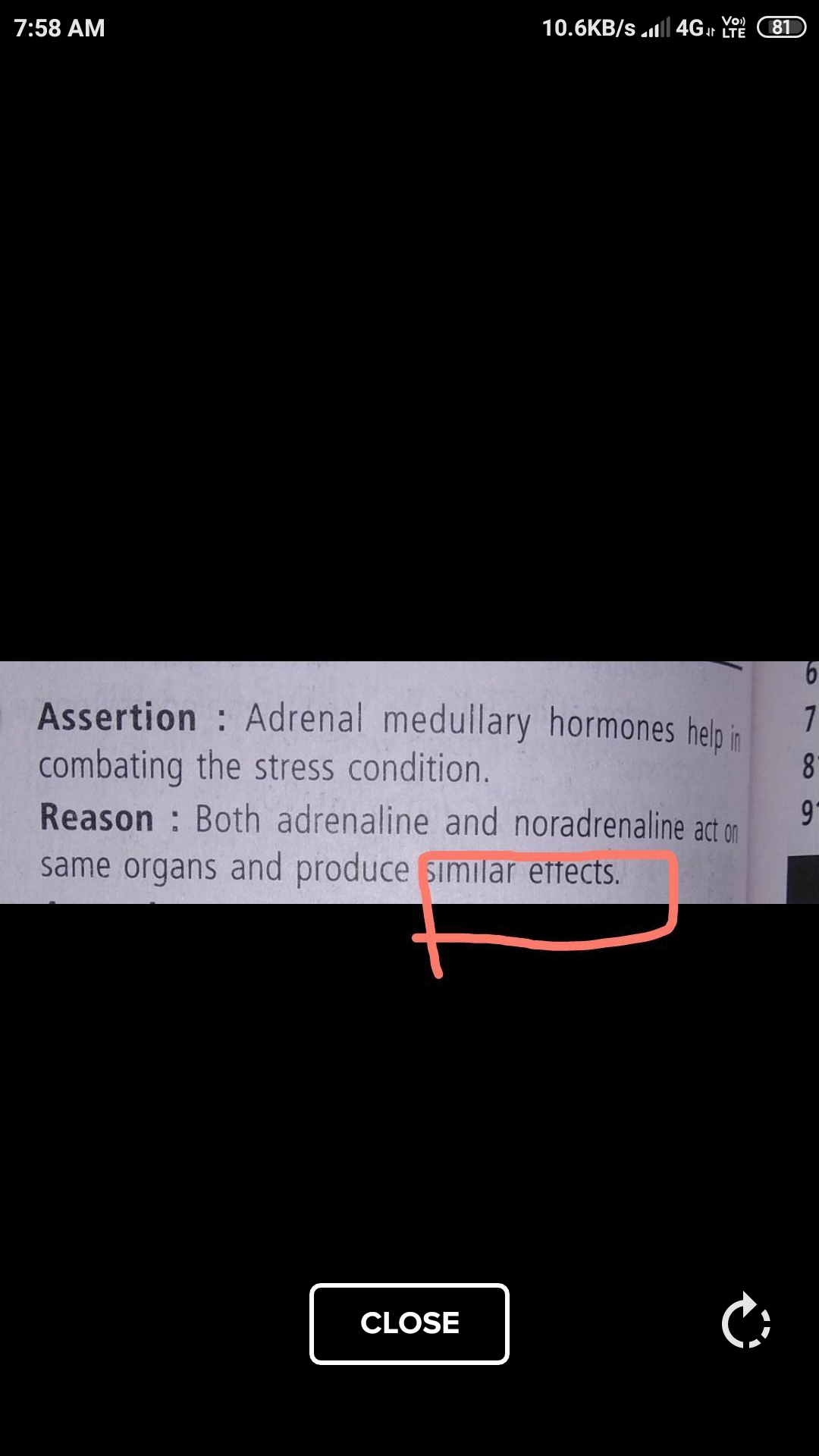Chemical Coordination and Integration
Chemical Coordination and Integration PDF Notes, Important Questions and Synopsis
SYNOPSIS
- Endocrine System
- Exocrine Glands: These are the glands with ducts. They discharge their secretions on the body surface or in body cavities.
- Endocrine Glands: These are ductless glands. Their secretions are directly poured into the blood.
- Heterocrine Glands: They are a mixed type of glands. They have exocrine as well as endocrine parts.
- A hormone, also called a chemical messenger, is a secretion from some glandular part of the body which is poured into the blood and which acts on the target organs or cells of the same individual.
-
Hypothalamus and its Hormones
The hypothalamus is a part of the brain which consists of several masses of grey matter called hypothalamic nuclei.Hypothalamic Hormone
Response of Pituitary
Target Organ - Thyrotropin-releasing hormone (T-RH)
Secretion of TSH
Thyroid - Adrenocorticotropin-releasing hormone (A-RH)
Secretion of adrenocorticotropic hormone (ACTH)
Adrenal cortex
- Follicle-stimulating hormone-releasing hormone (FSH-RH)
Secretion of FSH
Ovary/Testis
- Luteinising hormone-releasing hormone (LH-RH)
Secretion of LH
Ovary/Testis
- Growth hormone-releasing hormone (GH-RH)
Secretion of GH or STH
Most tissues
- Somatostatin
Inhibition of the secretion of growth hormone
—
- Prolactin-releasing hormone (P-RH)
Secretion of LTH or prolactin hormone
Mammary glands
- Endocrine Glands and their Hormones
Gland
Hormones Functions Disorders Adrenal glands
Adrenaline
- Prepares the body for the fight and flight mechanism
- Addison’s disease
- Cushing syndrome
Thyroid gland
Thyroxine
-
Regulates carbohydrate, protein and fat metabolism
-
Increases the basal metabolic rate (BMR)
-
Regulates ossification of bones and mental development
- Simple goitre
- Ophthalmic goitre
- Cretinism
Parathyroid glands
Parathormone
-
Controls metabolism and maintains blood calcium level
- Tetany
- Demineralisation of bones
Pituitary gland
Anterior pituitary
Growth hormone
- Essential for normal growth
- Dwarfism
- Gigantism
Thyroid-stimulating hormone (TSH)
- Controls the synthesis and secretion of thyroid hormones from the thyroid gland
____
Follicle-stimulating hormone (FSH)
-
Stimulates the growth and development of ovarian follicles in females
-
Promotes spermatogenesis in males
____
Luteinising hormone (LH)
-
Stimulates ovulation, formation of the corpus luteum and secretion of progesterone in females
-
Stimulates the secretion of androgens in the testes in males
____
Adrenocorticotropic hormone (ACTH)
- Regulates the synthesis and secretion of glucocorticoids from the adrenal cortex
____
Intermediate lobe
Melanocyte-stimulating hormone (MSH)
- Stimulates melanocytes present in the skin and hence controls pigmentation
____
Posterior pituitary
Oxytocin
-
Stimulates the contraction of uterine muscles during childbirth
-
Stimulates ejection of milk from the mammary glands after delivery
____
Vasopressin/anti-diuretic hormone
- Stimulates the resorption of water and electrolytes by DCT in the kidneys
____
Pineal gland
Melatonin
- Regulates the 24-hour diurnal rhythm of the body and body temperature
____
Thymus
Thymopoietin
Thymosin
-
Controls the maturation and distribution of lymphocytes
-
Stimulates the production of antibodies
____
Pancreas
Insulin
- Regulates the blood glucose (sugar) level
- Diabetes mellitus
- Hyperglycemia
Testes in males
Testosterone - Controls the development of male sex organs and secondary sexual characters during puberty
____
Ovaries in females
Oestrogen
- Controls the development of female sex organs and secondary sexual characters during puberty
____
- Hormones of the Heart, Kidneys and Gastrointestinal Tract
Organ
Hormones
Functions
Heart
Atrial natriuretic factor (ANF)
- Causes dilation of blood vessels which results in decrease in blood pressure
Kidney
Erythropoietin
- Stimulates erythropoiesis
Stomach
Gastrin
- Stimulates the gastric glands to secrete gastric juice
Intestine
Secretin
- Stimulates the secretion and release of bicarbonate ions and water from the exocrine pancreas
Cholecystokinin
-
Stimulates the pancreas to release its enzymes
-
Stimulates the gall bladder to release bile in the duodenum
Liver
Angiotensinogen
- Stimulates the adrenal cortex to produce aldosterone
Related Chapters
- The Living World
- Biological Classification
- Plant Kingdom
- Animal Kingdom
- Morphology of Flowering Plants
- Anatomy of Flowering Plants
- Structural Organisation in Animals
- Cell : The Unit of Life
- Biomolecules
- Cell Cycle and Cell Division
- Transport in Plants
- Mineral Nutrition
- Photosynthesis in Higher Plants
- Respiration in Plants
- Plant Growth and Development
- Digestion and Absorption
- Breathing and Exchange of Gases
- Body Fluids and Circulation
- Excretory Products and their Elimination
- Locomotion and Movement
- Neural Control and Coordination
- Reproduction in Organisms
- Sexual Reproduction in Flowering Plants
- Human Reproduction
- Reproductive Health
- Principles of Inheritance and Variation
- Molecular Basis of Inheritance
- Evolution
- Human Health and Disease
- Strategies for Enhancement in Food Production
- Microbes in Human Welfare
- Biotechnology : Principles and Processes
- Biotechnology and its Applications
- Organisms and Populations
- Ecosystem
- Biodiversity and Conservation
- Environmental Issues






